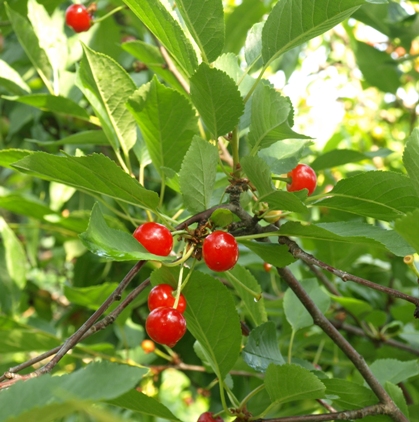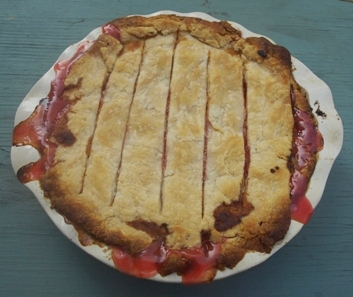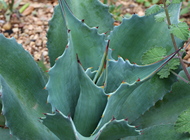 |
Prunus cerasus |
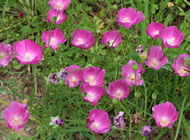 |
| Common name |
sour cherry |
| Family |
rosaceae |
| Life cycle |
tree |
| Flowers |
white |
| Size |
10' |
| Light |
sun-part shade |
One of the fruit trees planted in our orchard area, this one has been around for long enough that I'm confident it's truly a smaller variety, unlike some other 'dwarf' trees we've purchased, which have grown to giants. In this case, it may be the tree's natural habit rather than a bred characteristic. It's the only stone fruit that gives us a crop; it must be fairly resistant to brown rot: although (as the photo here shows) a small fraction of the fruit succumbs to the fungal disease, it's much better than the nectarine trees growing in its vicinity, whose entire crop is blighted every year. It could also be that the crop losses are limited by the earlier harvest: the cherries ripen by mid-late June, when the nectarines and apricots are still quite unripe (and largely untouched by the blight).
Sour cherries are self-fruitful: we have just one tree, but even without a pollinating companion it sets plenty of fruit. Most years the birds pick off all of the cherries before we have a chance to partake, but once in a while we get lucky. That's when cherry pies come to be.
|
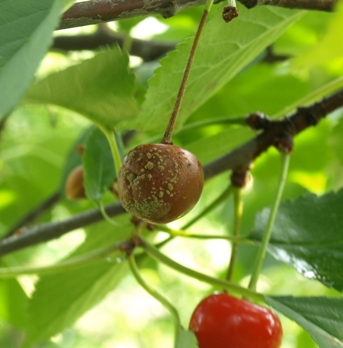
| | brown rot |
|
We left this plant behind in our Pennsylvania garden (and wish it well); we don't grow it in Houston. About my plant portraits
PlantLinks to other web pages about Prunus cerasus
I welcome comments about my web pages; feel free to use the form below to
leave feedback about this particular page. For the benefit of other visitors
to these pages, I will list any relevant comments you leave, and if
appropriate, I will update my page to correct mis-information. Faced with an
ever-increasing onslaught of spam, I'm forced to discard any comments including
html markups. Please submit your comment as plain text. If you have a
comment about the website as a whole, please leave it in my
guestbook. If you
have a question that needs a personal response, please
e-mail me.
Last modified:
June 29, 2008
Contact me
|


